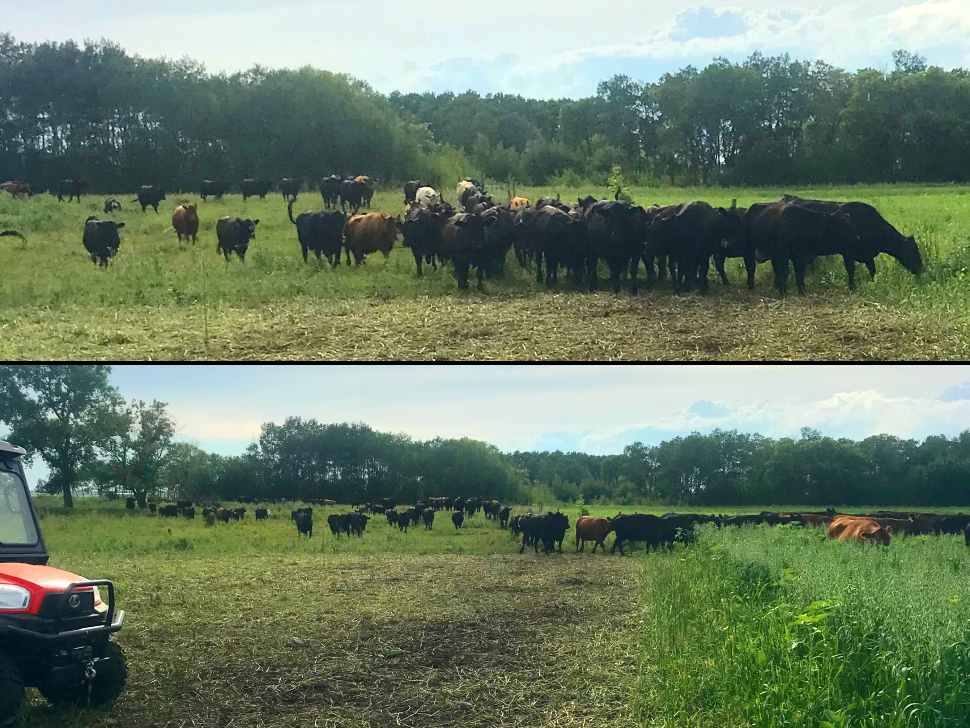For Neil Claringbould, a beef producer managing 180 head of cattle, the decision to adopt rotational grazing wasn't driven by trends – it was about getting the most out of the land he already had.
"The days of $200-an-acre pasture are long gone," Claringbould says. "We realized we needed to maximize what we’ve got."
Rotational grazing involves moving cattle between different sections of pasture every few days, instead of letting them graze one large area continuously. On Claringbould’s operation, the herd is divided into three groups, each rotated across a mix of native grasslands and hayfields.
"Ideally, you move them every day," he explains. "But we usually go three or four days, just due to time."
While it means a bit more work upfront – installing electric fencing and moving it regularly – the long-term benefits have been striking. Claringbould has seen improvements in everything from pasture regrowth to water infiltration.
"We had an inch of rain yesterday, and it all soaked in right away," he says. "No puddles. And when you dig, you find earthworms and sweet-smelling soil. It’s made a huge difference."
Healthier pastures, healthier cattle
The shift has also paid off in animal health. Because the cows are kept in smaller areas and moved regularly, Claringbould says it’s easier to monitor their wellbeing.
"If one has pinkeye or is limping, you can spot it much quicker," he says. "And the cows come off pasture in better shape. We’re seeing better weaning weights and higher conception rates."
Even fly pressure has dropped. "Since you’re moving them often, flies don’t have time to build up," he adds.
Getting started is simpler than it seems
For producers considering rotational grazing, Claringbould advises starting small.
"Just split your field into two or three sections and give it a go," he suggests. "You’ll see the difference right away."
Basic equipment like electric fencing, step-in posts, and reels are all that’s needed to begin. And there are financial supports available through programs like the Prairie Watersheds Climate Program (PWCP) and the Seine Rat Roseau Watershed District.
"There’s great funding – up to 85 per cent covered, including some labour costs," says Claringbould. "It makes trying something new much less risky."
Better land, better returns
While moving fences can take an hour or more, Claringbould says the benefits far outweigh the inconvenience.
"You get more grass, better grass, healthier cattle, and improved soil. It’s simple, and it works," he says. "Just give it a shot."
To learn more about rotational grazing or to inquire about available funding, visit www.srrwd.ca or call the Seine Rat Roseau Watershed District directly at 204-326-1030.
